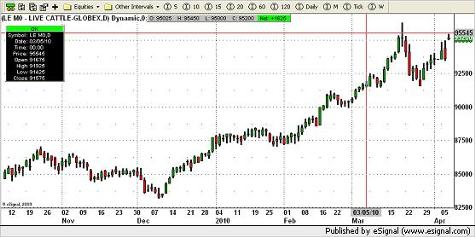To view the multimedia assets associated with this release, please click: http://multivu.prnewswire.com/mnr/lockheed/42216/
(Photo: http://www.newscom.com/cgi-bin/prnh/20100318/MM57524 )
"Today's vertical landing onto a 95-foot square pad showed that we have the thrust and the control to maneuver accurately both in free air and in the descent through ground effect," said F-35 Lead STOVL Pilot Graham Tomlinson.
Lockheed Martin F-35B descending to first vertical landing Click Here to Download Image
Tomlinson performed an 80-knot (93 miles per hour) short takeoff from Naval Air Station Patuxent River, Md., at 1:09 p.m. EDT. About 13 minutes into the flight, he positioned the aircraft 150 feet above the airfield, where he commanded the F-35 to hover for approximately one minute then descend to the runway.
"The low workload in the cockpit contrasted sharply with legacy short takeoff/vertical landing (STOVL) platforms," said Tomlinson, a retired Royal Air Force fighter pilot and a BAE Systems employee since 1986. "Together with the work already completed for slow-speed handling and landings, this provides a robust platform to expand the fleet's STOVL capabilities."
Robert J. Stevens, Lockheed Martin chairman and chief executive officer, said, "Today's vertical landing of the F-35 BF-1 aircraft was a vivid demonstration of innovative technology that will serve the global security needs of the U.S. and its allies for decades to come. I am extremely proud of the F-35 team for their dedication, service and performance in achieving this major milestone for the program."
Doug Pearson, Lockheed Martin vice president of F-35 Test and Verification, said, "The successful first vertical landing today met our test objectives and demonstrates the F-35B's capacity to operate from a very small area at sea or on shore – a unique capability for a supersonic, stealth fighter. This is the first of many such tests to fully define the short takeoff and vertical landing (STOVL) characteristics of the world's most capable 5th generation fighter. We will routinely conduct vertical landings and short takeoffs to further expand the operational flight envelope for the F-35B."
The aircraft in today's test, known as BF-1, is one of three F-35B STOVL jets currently undergoing flight trials at the Patuxent River test site. It is powered by a single Pratt & Whitney F135 turbofan engine driving a counter-rotating
The F-35B will replace
The F-35 program is using the Lockheed Martin-developed Autonomic Logistics Information System (ALIS) for maintenance actions, spares tracking and technical data support. ALIS is part of the F-35's innovative sustainment architecture monitored by the F-35 Autonomic Logistics Global Sustainment (ALGS) Operations Center in Fort Worth. The early deployment of the F-35 net-enabled logistics system to be used by all nine partner countries helps ensure the F-35's smooth transition to operational status, and is a key enabler for lower life cycle costs.
The F-35 Lightning II is a 5th generation fighter, combining advanced stealth with fighter speed and agility, fully fused sensor information, network-enabled operations, advanced sustainment, and lower operational and support costs. Lockheed Martin is developing the F-35 with its principal industrial partners,
Headquartered in Bethesda, Md., Lockheed Martin is a global security company that employs about 140,000 people worldwide and is principally engaged in the research, design, development, manufacture, integration and sustainment of advanced technology systems, products and services. The Corporation reported 2009 sales of $45.2 billion.
Videos and photos will be posted as quickly as possible at:
http://multivu.prnewswire.com/player/42215-lockheed-martin-f-35/
For additional information, visit our website:


















No comments:
Post a Comment